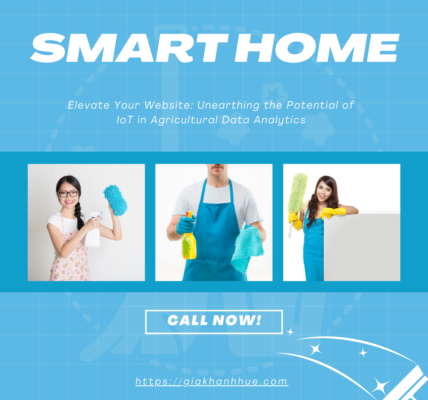The advent of the Internet of Things (IoT) has ushered in a new era in agriculture, fundamentally changing how we collect, analyze, and act upon agricultural data. This transformation, enabled by IoT, is not just enhancing traditional farming practices but is revolutionizing them. In “Revolutionizing Agriculture: How IoT Transforms Data Analysis,” we explore this paradigm shift and its profound implications for the agricultural industry.
At the heart of this revolution is the unparalleled capacity of IoT devices to gather detailed, real-time data from a variety of sources. Sensors placed in soil can provide vital information about its composition, moisture levels, and temperature. Drones survey fields from above, offering insights into plant health, irrigation needs, and crop maturity. This wealth of data, previously unavailable, is now at farmers’ fingertips, facilitating informed decision-making like never before.
The transformative power of IoT lies in its ability to turn raw data into actionable insights. Advanced analytics and machine learning algorithms process this data, helping farmers understand patterns and anomalies. For example, predictive analytics can forecast weather conditions, allowing farmers to optimize planting schedules and irrigation. This level of precision agriculture leads to increased yields, reduced resource waste, and minimized environmental impact.
IoT’s role in data analysis also extends to supply chain optimization. From monitoring storage conditions to ensuring efficient transportation, IoT technologies ensure that the quality of produce is maintained from farm to table. This traceability is paramount in ensuring food safety and in meeting the increasingly stringent demands of consumers for transparency.
For websites focusing on agriculture and technology, incorporating content about IoT in agriculture is essential for SEO and audience engagement. Topics like ‘IoT applications in agriculture’, ‘benefits of data analytics in farming’, and ‘future trends in agricultural technology’ are not only rich in keywords but are also of high interest to readers. In-depth articles, infographics, and videos about IoT implementations can enhance user engagement and position the website as a leader in this niche.
Interactive features such as webinars or podcasts with experts discussing the latest developments in IoT for agriculture can also drive traffic and improve user engagement. Engaging with the agricultural community through social media platforms to share insights and gather feedback can further enhance the website’s visibility and authority.
The integration of IoT in agriculture also paves the way for smarter resource management. Water, a critical resource in farming, can be used more efficiently with IoT-based irrigation systems. These systems analyze soil moisture data and weather forecasts to adjust watering schedules and volumes, ensuring optimal plant growth while conserving water. Similarly, IoT enables precise fertilizer and pesticide application, reducing the environmental footprint and input costs.
Furthermore, IoT’s impact extends to the farmer’s quality of life. With real-time monitoring and automated systems, farmers can reduce the manual labor and time spent on routine tasks. This technological shift allows them to focus on strategic decisions and innovative practices, elevating the role of the farmer in the 21st century.
For content creators and digital marketers in the agricultural sector, the potential for engaging and informative content is vast. Detailed case studies showcasing the success stories of IoT in agriculture can inspire and educate the audience. How-to guides on implementing IoT solutions can provide practical value, increasing the website’s utility and credibility.
SEO strategy should also focus on long-tail keywords related to IoT in agriculture. These might include terms like “benefits of IoT in crop management,” “IoT solutions for sustainable farming,” or “innovative IoT technologies in agriculture.” By targeting these specific phrases, websites can attract a highly engaged audience looking for detailed information in this niche.
User-generated content can also play a significant role. Encouraging farmers and agricultural professionals to share their experiences with IoT can provide authentic, diverse perspectives. This not only enriches the content but also fosters a community around the website, enhancing loyalty and trust.
the role of IoT in transforming agricultural data analysis and overall farming practices is undeniable. As this technology continues to evolve, it will undoubtedly unveil new opportunities and challenges in agriculture. Websites focusing on this area have a unique opportunity to lead the conversation, provide valuable insights, and drive innovation in this dynamic field. By effectively leveraging SEO strategies and engaging content, they can not only rank higher in search engine results but also make a meaningful impact on the agricultural community. The future of farming is data-driven, and IoT is the key to unlocking its full potential.

